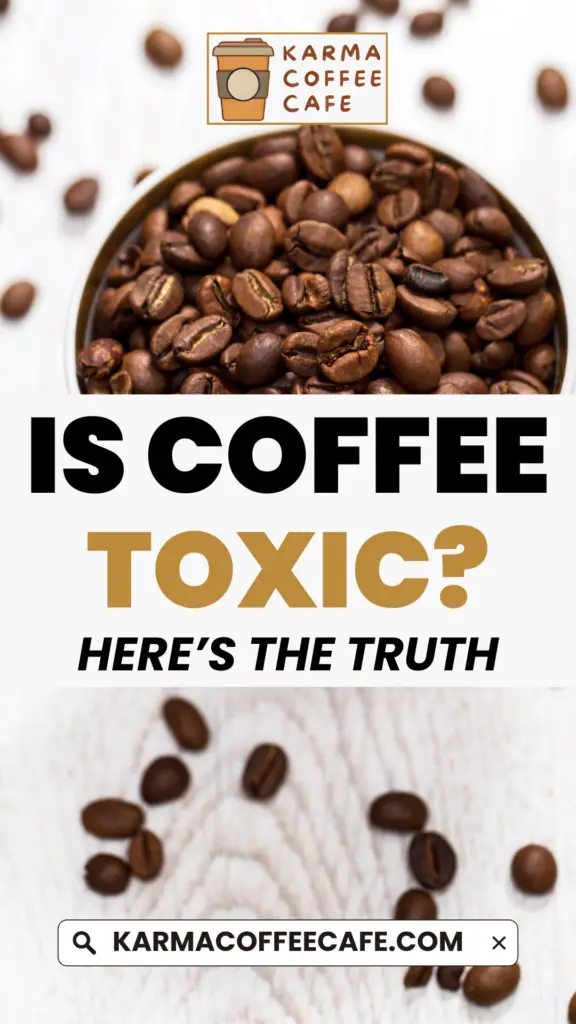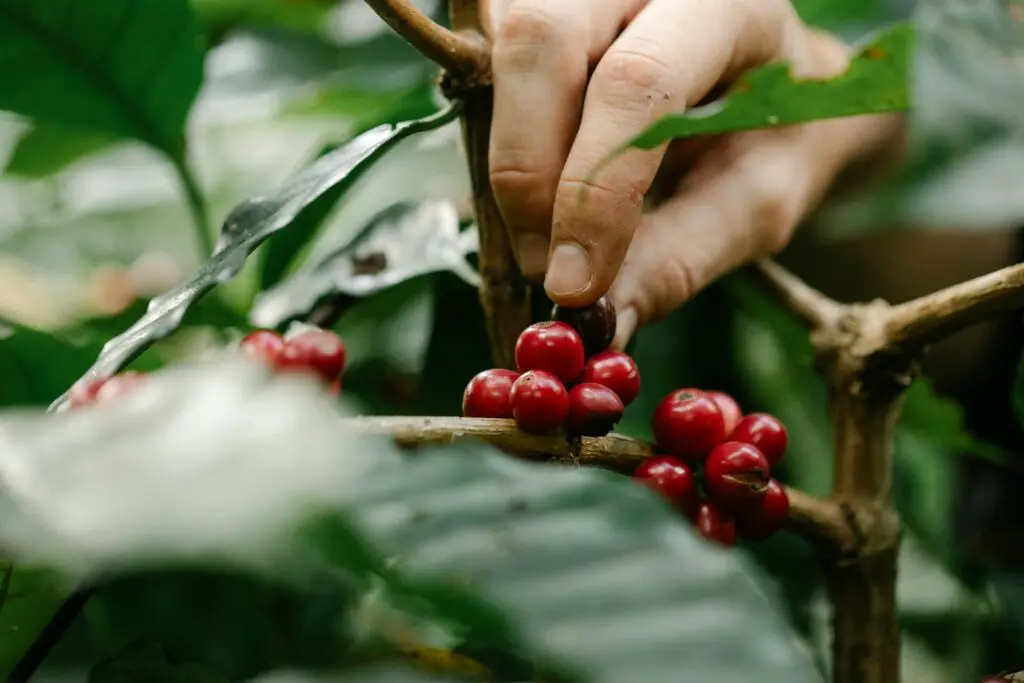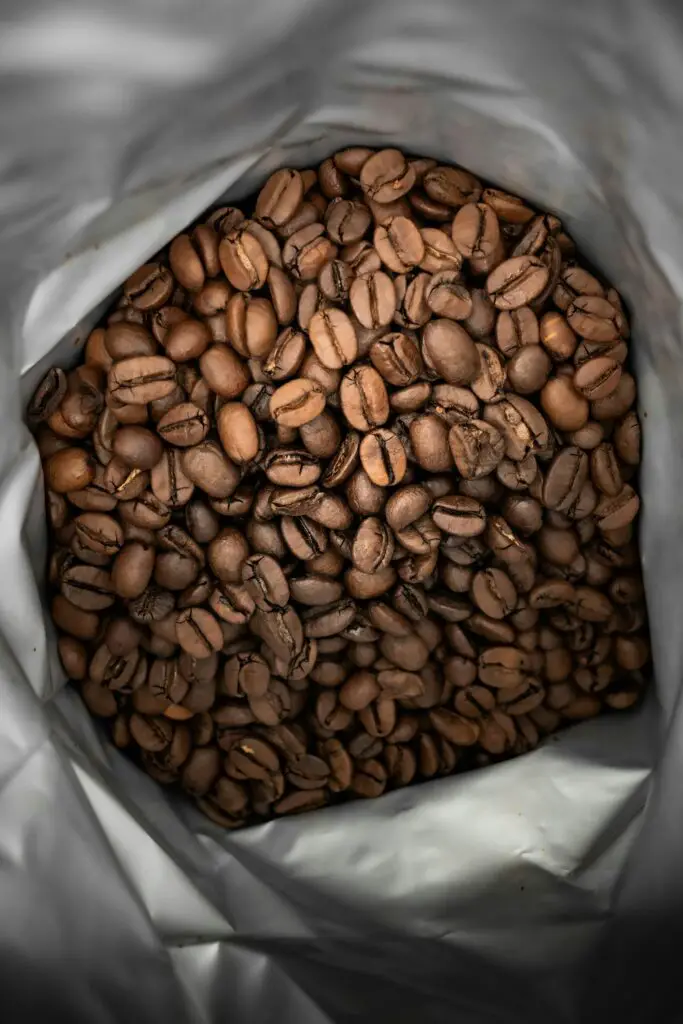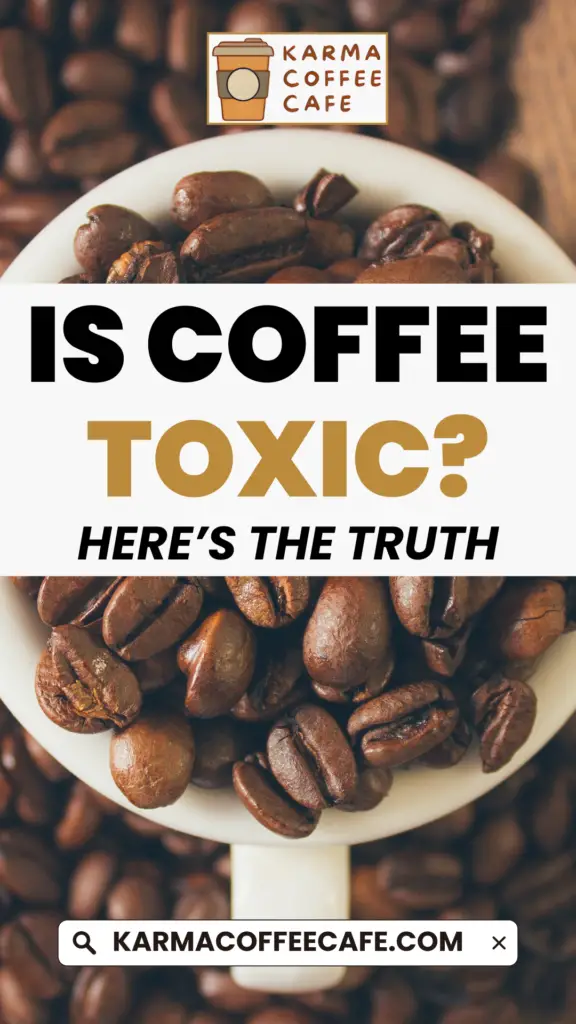Coffee is a daily ritual for millions, offering a comforting start to the day.
But have you ever wondered about the hidden dangers lurking in your cup?
Mycotoxins and pesticides in coffee can pose serious health risks.
This post dives deep into these potential threats, helping you understand where they come from and how they affect you.
More importantly, you’ll learn practical steps to ensure your coffee remains a safe and enjoyable part of your routine.

The Short Answer
Coffee is not inherently toxic, but it can contain trace amounts of mycotoxins and pesticide residues.
These levels are typically below safety limits and are not harmful.
Choosing high-quality, organic coffee and proper storage can further reduce any potential risks.
Enjoying coffee in moderation while making informed choices ensures its benefits outweigh the risks.
Understanding Coffee Toxins

Mycotoxins are toxic compounds produced by certain molds.
These molds can grow on coffee beans if they are stored improperly.
These toxins can cause poisoning when ingested in large amounts and may also contribute to chronic health concerns.
In the context of coffee, mycotoxins are primarily associated with two types: aflatoxin B1 and ochratoxin A.
Aflatoxin B1 is a known carcinogen and has been linked to various harmful effects.
Ochratoxin A, while less studied, is believed to be a weak carcinogen that may be harmful to the kidneys.
The presence of mycotoxins in coffee beans is a common occurrence, with studies finding measurable levels in both roasted and unroasted beans, as well as in brewed coffee.
For instance, a study found that 33% of green coffee beans from Brazil contained low levels of ochratoxin A, while another study detected ochratoxin A in 18% of coffee brews from commercially available coffee beans in Portugal.
However, it’s essential to note that the levels of mycotoxins in coffee are generally below the safety limits, and the liver can neutralize these toxins as long as exposure remains low.
Additionally, many countries regulate the levels of these compounds, although some have stricter standards than others.
While mycotoxins are present in a significant percentage of coffee beans, they do not significantly impact the taste of coffee, as the bitterness is primarily determined by the amount of tannins in the beans.
Furthermore, purchasing high-quality products, including coffee, is generally a good idea, but paying extra for mycotoxin-free coffee beans is likely a waste of money.
Sources of Toxins in Coffee

Mold and Mycotoxins in Coffee
As mentioned earlier, Mold grows on coffee beans primarily due to the humid and warm conditions where coffee is grown.
Tropical climates provide the perfect environment for mold development.
High humidity and temperatures create conditions where molds thrive.
The way coffee is processed also affects the risk of mold growth.
Natural processing, where beans are dried with the fruit still on them, poses a higher risk.
This method can trap moisture, encouraging mold growth.
On the other hand, wet processing, which involves removing the fruit before drying the beans, reduces this risk.
Shipping and storage are critical periods for mold development.
Green coffee beans are often transported in burlap sacks, which can retain moisture.
If these sacks are not stored in dry conditions, mold can easily form.
Proper storage in cool, dry places is essential to prevent this.
Even during roasting, mold can be a concern.
Although roasting reduces some mycotoxins, it can also create new toxins.
Ensuring beans are mold-free before roasting is crucial for safety.
Pesticides and Herbicides in Coffee
Pesticides and herbicides are commonly used in coffee farming to protect crops from pests and diseases.
Chemicals like Glyphosate, Mancozeb, Endosulfan, Atrazine, and Chlorpyrifos are frequently applied.
Glyphosate is used to control weeds, but it has been classified as “probably carcinogenic to humans” by the World Health Organization.
Mancozeb is used to prevent fungal diseases, while Endosulfan is an insecticide targeting coffee borer beetles.
Atrazine is applied to control broadleaf weeds, and Chlorpyrifos is used to manage insect infestations.
Exposure to these chemicals poses several health risks.
Pesticides can lead to poisoning and long-term health issues such as cancer, hormone disruption, and immune system problems.
These risks highlight the importance of choosing coffee that is grown with minimal chemical use or opting for organic options.
Health Impacts of Coffee Toxins

Symptoms of Mycotoxin Exposure
Mycotoxins in coffee can cause a range of health issues.
Common symptoms include headaches, dizziness, and anxiety.
Some people may also experience irritability and stomach problems.
These symptoms can be mild but persistent, affecting daily life.
In more severe cases, mycotoxins can lead to significant health problems.
These include immune deficiency, making it harder for your body to fight off infections.
Allergies can become more severe or develop due to exposure.
Poisoning from mycotoxins can occur, with symptoms such as vomiting, diarrhea, and even liver damage.
Long-term exposure has been linked to cancer, particularly liver cancer.
Risks Associated with Pesticides
Pesticides used in coffee farming carry significant health risks.
Chemicals like Glyphosate are known for their potential carcinogenic effects.
The World Health Organization classifies Glyphosate as “probably carcinogenic to humans.”
This means that long-term exposure could increase the risk of developing cancer.
Besides cancer, pesticides can disrupt hormonal systems.
Hormone disruption can lead to a variety of health issues, including reproductive problems and developmental disorders.
The immune system is also at risk, as these chemicals can weaken the body’s natural defenses.
This makes it easier to get sick and harder to recover from illnesses.
Specific Toxins in Different Types of Coffee
Not all coffee types have the same levels of toxins.
Decaf coffee often contains higher levels of mycotoxins compared to regular coffee.
This is because the decaffeination process can make beans more susceptible to mold growth.
Instant coffee also poses a higher risk.
It tends to have more mycotoxins due to the processing methods used to make it.
Another concern is acrylamide, a chemical formed during the roasting process.
Acrylamide is a potential carcinogen, meaning it could increase the risk of cancer.
All roasted coffee contains acrylamide, but the levels can vary depending on the roasting temperature and duration.
How to Ensure Your Coffee is Safe

Selecting Mold-Free Coffee
Choosing the right beans is the first step in ensuring your coffee is free from mold.
Opt for high-altitude beans, as these are less prone to mold growth due to the cooler climate.
Wet-processed beans are another good choice.
This method removes the fruit from the beans before drying, reducing the chance of mold development.
Hand-picked beans are also preferable.
They are carefully selected, minimizing the risk of moldy or damaged beans making it into your coffee.
Certification from independent labs is crucial.
Look for coffee that has been tested and certified to be mold-free.
This ensures that the coffee meets strict safety standards and gives you peace of mind about what you are consuming.
Reducing Pesticide Exposure
To reduce your exposure to harmful pesticides, choose certified organic coffee.
Organic farming practices prohibit the use of synthetic pesticides and herbicides, making your coffee safer.
Organic coffee is grown using natural methods that protect both the environment and your health.
The benefits of organic farming go beyond just avoiding chemicals.
Organic farming practices promote biodiversity, improve soil health, and reduce pollution.
By choosing organic coffee, you are supporting sustainable farming practices that benefit the planet as well as your well-being.
Proper Storage and Preparation
Proper storage and preparation are key to keeping your coffee safe.
Store your coffee in a dry, cool place to prevent mold growth.
Avoid using plastic coffee pods, which can contain harmful chemicals like BPA.
Instead, use coffee makers made from safer materials.
When it comes to decaf coffee, opt for water-processed decaf.
This method uses water to remove caffeine, avoiding the chemical solvents used in other decaffeination processes.
Water-processed decaf is a safer choice, reducing your exposure to both mycotoxins and chemical residues.
Here are some of the most popular Non toxic and mold-free coffee brands to consider:
- Lifeboost Coffee
- Volcanica Coffee
- Purity Coffee
- Mayorga Organics
- Three Sisters
- Four Sigmatic
- Laird Superfood
- Peak Performance
Coffee’s Health Benefits Despite Toxins

Despite concerns about toxins, coffee offers numerous health benefits.
Drinking coffee can protect against type 2 diabetes.
Studies show that regular coffee consumption helps regulate blood sugar levels and improve insulin sensitivity.
Coffee also reduces the risk of heart attacks and strokes.
It contains antioxidants that support heart health and improve blood vessel function.
Regular coffee drinkers often have lower rates of cardiovascular disease.
Liver disease is another area where coffee shines.
Drinking coffee helps protect the liver from conditions like cirrhosis and fatty liver disease. It also lowers the risk of liver cancer.
Coffee’s anti-inflammatory properties are beneficial for liver health.
Parkinson’s disease is a neurodegenerative disorder that coffee can help prevent.
The caffeine in coffee has been shown to protect brain cells.
Regular coffee drinkers have a lower risk of developing Parkinson’s.
Roasting coffee reduces mycotoxin levels significantly.
The heat involved in roasting destroys many of the mycotoxins present in raw coffee beans.
One study found that roasting coffee beans at three traditional methods significantly reduced aflatoxins (AFs) contents in naturally contaminated coffee beans.
Another study demonstrated that heat treatment (roasting) at 200°C for 10 or 20 minutes reduced the levels of ochratoxin A by only 0–12% in the dried whole beans.
Additionally, a study that investigated the effect of roasting conditions on the reduction of ochratoxin A in coffee found that all roasting conditions resulted in a highly significant reduction of 69% over the combined results.
Conclusion
Coffee offers significant health benefits, from protecting against diseases to providing essential antioxidants.
However, it also comes with potential risks due to toxins like mycotoxins and pesticide residues.
By choosing high-quality, organic coffee and proper storage, you can minimize these risks.
Enjoy your coffee while making informed choices to ensure it remains a healthy part of your daily routine.
Balancing the enjoyment and benefits of coffee with awareness of its risks is key to safer consumption.
FAQs
Are mycotoxin levels in coffee harmful?
Most coffee contains mycotoxins, but usually at levels below safety limits.
These trace amounts are not typically harmful.
Regulations in over 100 countries ensure mycotoxin levels in food, including coffee, remain safe for consumption.
How do coffee makers keep mycotoxin levels low?
Coffee makers use several methods to keep mycotoxin levels low.
Proper processing and roasting techniques significantly reduce mycotoxin content.
Wet processing of beans also helps minimize mold growth.
Regular testing ensures the final product is safe.
Why is organic coffee safer?
Organic coffee is grown without synthetic pesticides and herbicides, reducing chemical exposure.
Organic farming practices emphasize natural pest control and soil health, which contribute to safer coffee beans.
Additionally, organic coffee is less likely to contain harmful toxins, making it a healthier choice.


